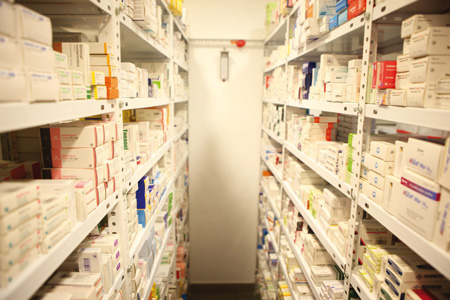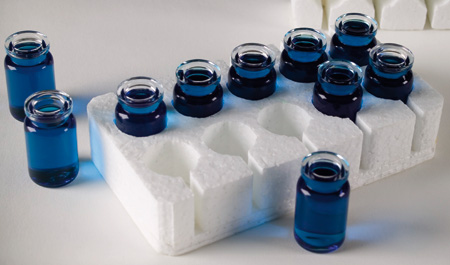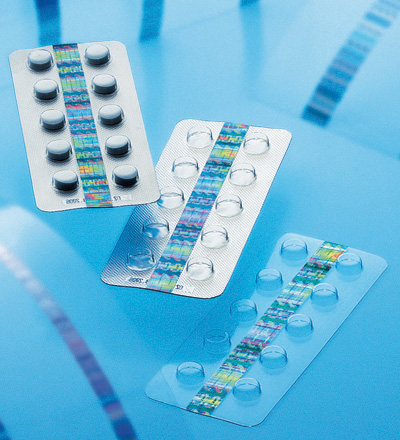Packaging pharmaceutical products
FIGURES AND TRENDS According to analysis by Prometeia, in 2012 the pharmaceutical sector as a whole (OTC and non-prescription, including for hospitals and excluding veterinary) did not exceed modest growth (+0.5%). The present report examines only OTC and branded drugs sold at the pharmacy, of which it analyzes quantity and packaging configurations.
 In 2011, the pharmaceutical sector generated approximately 26,870 million euro. According to an analysis formulated by Prometeia, which analyzed the growth trend of total demand for pharmaceuticals in 2012, production in the sector managed some growth thanks to medicine exports, which grew by approximately 3-4%, generated mainly by exchanges between European drug companies within the EU.
In 2011, the pharmaceutical sector generated approximately 26,870 million euro. According to an analysis formulated by Prometeia, which analyzed the growth trend of total demand for pharmaceuticals in 2012, production in the sector managed some growth thanks to medicine exports, which grew by approximately 3-4%, generated mainly by exchanges between European drug companies within the EU.
The Italian domestic market, on the other hand, saw modest growth, probably not more than 0.2-0.3%.
Still at the national level, according to IMS, consumption of non-subsidized drugs fell by 4%, while that of subsidized drugs grew by 1.7%.
The growth prospects for 2013 are moderately positive; in fact, according to Prometeia’s analysis, Italian enterprises will still have a difficult domestic market to deal with, which will limit growth, while exports should continue following the positive trend. Globally, the pharmaceutical sector is expected to see modest growth in 2013, around 0.3-0.5%.
The substantial resilience of domestic medicine consumption, even in this moment of crisis that has affected the willingness of families to spend, is due to of course to the aging population, growing attention to prevention and quality of life, and population growth, which can be attributed to a steady increase in the numbers of immigrants.
The packaging types on the market can be divided as follows: approximately 87% branded products in classes A, B and C (according to the Ministry of Health classification), approximately 3% other branded products sold without a prescription and 10% non-prescription drugs, tending to grow.
OTC and branded drugs: growth
This analysis of the Italian market of pharmaceuticals for human use examines only the area of branded and OTC drugs sold at the pharmacy, excluding pharmaceuticals consumed in hospitals.
It is estimated that this market area produced 6,487 million packagings in 2012, representing approximately 2.6% growth over 2011.
From 2000 to 2012, consumption of OTC and branded pharmaceuticals expressed an average annual growth rate of 2.8%.
The number of packagings sold in 2012, concerning the main pharmaceutical forms, reached the following levels: 6,180 million packagings for liquid pharmaceuticals (injection, oral, eyes, etc.), 3.8% growth over 2011. Moreover, 1,298 million were sold for solid pharmaceuticals (compresses, caps, powders etc.) with +0.5% growth, and 144 million were sold for other types (pomades, gels, sprays, etc.), which constitutes a 10% drop.
In recent years, the rise of sales of liquid pharmaceuticals has been driven mainly by injections following the spread of vaccinations against influenza and vaccinations for infants; the birth rate has been growing for the past two years thanks to immigrant population growth.
The progress of solid pharmaceuticals was driven mainly by drugs administered orally.
As for other pharmaceuticals (mainly creams, gels and pomades), it is estimated that they have experienced a slight decline.

Use of the various packaging types
In consideration of its use functions, the packaging of a pharmaceutical requires careful work. In fact, the packaging must first of all fulfill certain primary functions: protecting the product, guaranteeing the absence of negative interactions between container and drug, making use easy and functional, preventing tampering and improper uses, for example by children.
The choice of packaging is also closely tied to the type of drug (liquid, solid, spray, etc.), but also to the properties of the substances it contains; as is known, the choice of packaging for a new drug must be approved by the Ministry of Health.
It is estimated that, in 2012, in order to package the various types of drugs, 2,060 million packagings were used, +0.5% compared to 2011.
With a total share of 55%, the leading position of blisterpacks was confirmed once more; this packaging type is used especially for orally administered drugs (91.8% of total).
Next comes glass packaging, with a total share of 20.1%, a slight increase over 2011, following the rise of injection drugs, of which this type remains the only format.
A different situation concerns liquid (drinkable) medicines, where vials and bottles tend to be replaced by plastic ones. Glass has a moderate position among ophthalmic products.
Worldwide, plastic packaging is tending to grow, reaching a share of 19.1%; the fields of use are:
- non-drinkable drugs, i.e. eye, ear, etc. (93%);
- solid drugs for external use, such as creams, powders... (41%);
- creams and pomades (24%).
In recent years, the area of plastic packaging has been affected by the market’s orientation toward single-dose, in place of multi-dose systems.
In the field of oral pharmaceuticals, for example, traditional (multi-dose) bottles are in decline while, at the same time, single doses packed in generally multi-material containers or pouches, with a net prevalence of plastic, are on the rise.
Single doses have reached a share of 5% in the eye/ear area, 3.5% for solid oral drugs, 9% for external use and 10% for pomades and foams.
The other main types of primary packaging used for pharma are spray cans, flexible tubes from both plastic and aluminium, rigid aluminium tubes and cellulosic containers.
Spray cans in this sector are 98% aluminium. Their main competitor is the plastic mechanical dispenser, whose participation in the market does not exceed 8%.
Flexible tubes are used for creams and pomades: of the total, plastic accounts for 24%, aluminium for 66%. The remaining 10% concerns other packaging types.
Rigid aluminium tubes are present in the area of solid pharmaceuticals for external use (mostly powders) and account for about 50%.
In addition to primary packaging, of course, pharmaceuticals often require secondary packaging (paperboard boxes) and packaging for shipping (corrugated cardboard boxes, pallets, stretch film, etc.).
As for the boxes, their main use is necessary in that, in addition to protecting the container, they must contain the pamphlet with product properties and indications for use.
The number of folding boxes used in 2012 amounted to approximately 41,000 tons. Of course handling the drugs also entails the use of corrugated cardboard boxes and pallets.
Plinio Iascone
Istituto Italiano imballaggio

















